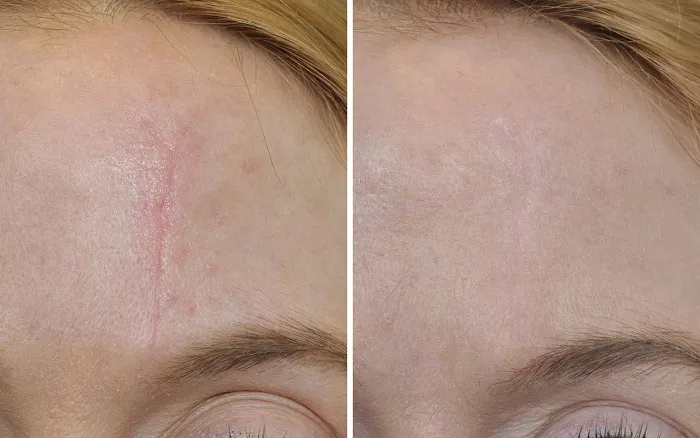Scars are a natural part of the healing process, but they can sometimes be a source of discomfort or self-consciousness. If you’re considering scar revision, you might wonder whether a dermatologist is the right specialist to consult. This guide will explore the role of dermatologists in scar revision, the types of treatments available, and what you can expect from the process.
What Is Scar Revision?
Scar revision is a procedure aimed at improving the appearance of scars, making them less noticeable and more consistent with the surrounding skin tone and texture. While it’s impossible to remove a scar entirely, various treatments can significantly reduce its visibility. Scar revision can be both cosmetic and functional, especially if a scar restricts movement or causes discomfort.
Types of Scars
Different scars require different treatment approaches. Common types include:
- Hypertrophic Scars: Raised scars that remain within the boundaries of the original wound.
- Keloid Scars: Thick, raised scars that extend beyond the original wound area.
- Atrophic Scars: Depressed scars, often resulting from acne or chickenpox.
- Contracture Scars: Scars that tighten the skin, potentially restricting movement, often from burns.
The Role of Dermatologists in Scar Revision
Can Dermatologists Perform Scar Revision?
Yes, dermatologists are highly trained in diagnosing and treating various skin conditions, including scars. They can perform a range of scar revision procedures, from non-invasive treatments to minor surgical interventions. For more complex cases, they may collaborate with or refer patients to plastic surgeons.
Dermatologist vs. Plastic Surgeon
While both dermatologists and plastic surgeons can perform scar revision, the choice depends on the scar’s nature and severity. Dermatologists often handle less invasive procedures and skin-related treatments, whereas plastic surgeons may be involved in more extensive surgical revisions. Consulting with a dermatologist is a good first step to assess your options.
Scar Revision Techniques Offered by Dermatologists
Topical Treatments
For minor scars, dermatologists may recommend topical treatments such as:
- Silicone Gel Sheets: Help flatten and soften raised scars.
- Steroid Creams: Reduce inflammation and itching.
- Retinoids: Promote cell turnover and improve skin texture.
Injectable Treatments
Injections can be effective for certain types of scars:
- Corticosteroid Injections: Reduce inflammation in hypertrophic and keloid scars.
- Dermal Fillers: Elevate depressed scars to match surrounding skin.
- 5-FU or Bleomycin Injections: Used for resistant keloid scars.
Laser Therapy
Laser treatments can improve the color, texture, and height of scars:
- Pulsed Dye Laser (PDL): Targets blood vessels in red scars.
- Fractional CO2 Laser: Resurfaces the skin, improving texture.
- Non-Ablative Lasers: Stimulate collagen without damaging the surface.
Microneedling
This procedure uses fine needles to create micro-injuries, stimulating collagen production and improving scar appearance.
Surgical Options
For more severe scars, dermatologists may perform minor surgical procedures:
- Scar Excision: Removing the scar tissue and closing the wound with fine stitches.
- Z-Plasty: A technique that repositions the scar to align with natural skin folds, making it less noticeable.
What to Expect During the Scar Revision Process
Consultation
Your dermatologist will assess the scar’s type, size, location, and your skin type. They’ll discuss your medical history and treatment goals to determine the best approach.
Treatment Plan
Based on the assessment, a personalized treatment plan will be developed. This may involve one or multiple procedures, depending on the scar’s characteristics.
Recovery
Recovery times vary depending on the treatment:
- Topical Treatments: Minimal to no downtime.
- Injections: Minor swelling or discomfort for a few days.
- Laser Therapy: Redness and sensitivity for a few days to a week.
- Surgical Procedures: Longer recovery, with stitches removed in about a week and full healing over several weeks.
Risks and Considerations
While scar revision procedures are generally safe, potential risks include:
- Infection
- Allergic Reactions
- Skin Discoloration
- Recurrence of the Scar
Discuss these risks with your dermatologist to make an informed decision.
Conclusion
Dermatologists are well-equipped to perform various scar revision procedures, offering both non-invasive and minor surgical options. If you’re considering scar revision, consulting with a dermatologist can help you understand the best treatment plan tailored to your needs.
Related topics:


